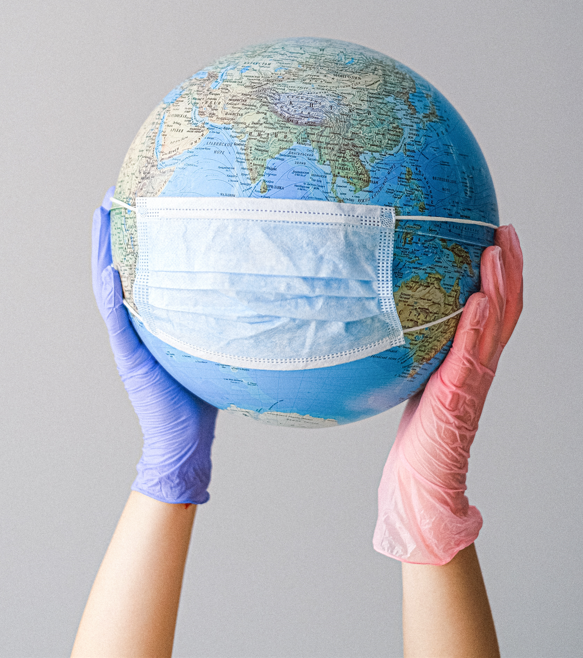At the end of 2019, the virus COVID-19 started spreading from Wuhan (China) throughout the entire World, leading to the most outbreaking pandemic event since the Spanish flu of 1918. This pandemic found the modern World unprepared: between December 2019 and September 2020, the World Health Organization (WHO) counted more than 200 million of confirmed COVID- 19 cases and more than 4.5 million deaths that can be directly related to COVID-19 infections1. These numbers alone show one important aspect of the COVID-19 in addition to its danger: its high level of infectiousness. Hence, in Europe as well as in the rest of the World, it has been necessary to put in place historic policies and guidelines to tackle the spread, such as coordinated temporary restriction of non-essential travel to the EU2 (EU COMM (2020) 499). At the beginning of the pandemic, in fact, the only possible way to contrast the virus was a full lockdown, which had consequence both on the economy of the states (3.94 trillion U.S. dollars of lost economic output has been globally estimated3) and psychology of the citizens (constant stress of contagious and social distance have resulted in a rise of stress, depression and anxiety4).

Then, the development of vaccines led to an improvement of the social and economic situation5 (EU COMM(2021) 35)6, 7, it is clear that the coexistence with the virus and its high level of contagiousness must be taken into account and fought on a daily base. As such, in addition to extraordinary actions, such as national lockdown, daily strategies must be developed and implemented in order to go back to the pre-COVID normality. Preventive measures are vital as a first line against COVID-19 variants or any other outbreak (EU COMM (2020) 318). They can not only reduce the virus spreading, but also, communicating the feeling to live in a safer environment, they can alleviate the psychological and social impact, by reducing the threatening halo associated to the pandemic threat. MIRIA Project fits in this battle against the pandemic and will provide a crucial piece – synergetic with the rest of the puzzle – to restore and better European quality of life. The project will provide biocide coatings for a healthier environment. A specific environment will be chosen (i.e., hospital) as the initial project target but MIRIA ambitious goal is also to transfer the same approach to other environments. In fact, one of the characteristics that distinguish covid virus from other type of disease is its extremely high contagiousness and easiness of transmission among humans via liquid medium, such as saliva droplets, by direct contact or indirect contact (i.e., frequently used surfaces). Therefore, in addition to the social distance, the use of surfaces that are able to inactivate the virus are necessary to tackle the pandemic. Within this social, economic, and sanitary situation, the project MIRIA aims to reduce the spread of the virus by tackle it on daily base, in line with the research priorities outlined by the Health Environment Research Agenda for EUROPE (HERA)8. ithin MIRIA project, different types of active molecules (i.e., nanoparticles and light-activated molecules), coating technologies (sol-gel, suspension plasma spray, bio-based coatings), and pilot scale facilities will be integrated to obtain nanocoatings scaled up to pilot scale and demonstrated at TRL6. From the employment of nanocoating solutions developed in MIRIA project, a significant reduction of the spread of the virus due to random contacts of infected surface is foreseen. Moreover, by their implementation, communal and workplaces are expected to become intrinsically safer leading to a reduction of psychological stress due to social distance and loss of work hours due to illness.
